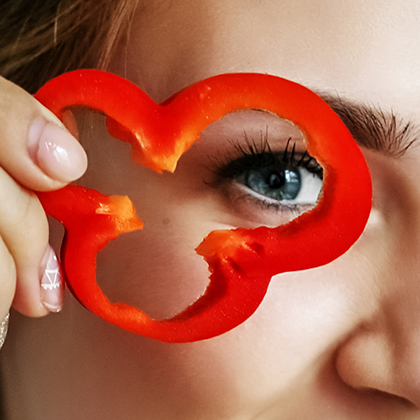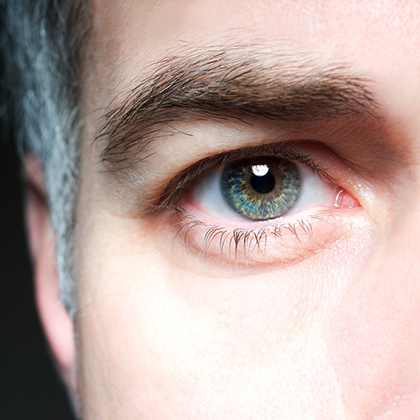
If you currently suffer from diabetes, according to Diabetes UK, you aren’t alone. More people than ever have diabetes, with increasing numbers at risk of type 2 diabetes.
Diabetes can develop when the amount of glucose (sugar) in your bloodstream becomes too high. This is because the pancreas isn't producing enough insulin (a hormone that breaks down glucose).i If current trends continue, says the charity, more than five million people in the UK will have diabetes.
There are two main forms of diabetes: Type 1 and Type 2. Type 1 diabetes usually develops quickly, and mostly affects people under the age of 40: including children (Diabetes UK suggests around 10 percent of those with diabetes have Type 1).ii Most people living with type 1 diabetes require insulin, usually via injection or a pump.
Type 2 is often called adult-onset diabetes because it most often develops in people aged 40 or older (though anyone can develop it). It usually means that you only produce some insulin, or that your insulin isn't working effectively. Type 2 diabetes is often controlled with diet and exercise, or by taking other medication including insulin tablets.
Diabetes complications
Considering the added risk of diabetes, managing diabetes can be a worry and a challenge. Unfortunately, both Type 1 and Type 2 diabetes can lead to long-term complications with your eyes, feet, kidneys, nerves, and heart.
 Some find diabetes doesn’t cause any problems with their vision. However, where diabetes and eye health are concerned, according to the RNIB, diabetes negatively affects some people’s vision in numerous ways, including:ii
Some find diabetes doesn’t cause any problems with their vision. However, where diabetes and eye health are concerned, according to the RNIB, diabetes negatively affects some people’s vision in numerous ways, including:ii
A person’s vision becoming blurred.
When blood sugar levels change, which can happen if your diabetes is uncontrolled, it can affect the lens in your eye.
High sugar levels in the fluid surrounding the eye’s lens
This can make the lens swell and become cloudy, causing a cataract. This can affect your vision, making it blurry in some areas or overall.
Diabetes can also be linked with another eye condition called glaucoma.
Glaucoma is caused by damage to the optic nerve and can lead to loss of vision if untreated.
Diabetic retinopathy is the most serious complication from diabetes that affects vision.
Complications from diabetes can cause a block in the network of blood vessels that supply the retina, found at the back of the eye. This may make them leak or grow abnormally.
There are two main types of diabetic retinopathy. Background diabetic retinopathy doesn’t usually affect your eyesight at first, but if left untreated it can worsen and lead to proliferative diabetic retinopathy. This can eventually increase your risk of serious sight loss.
According to the RNIB, five to 10 percent of people with diabetes develop proliferative diabetic retinopathy, and it’s more common in people with Type 1 diabetes than those with Type 2.iii
How to keep your vision healthy
Having diabetes doesn’t always lead to problems with your eyes. In fact, according to the American Academy of Ophthalmology, around 90 percent of diabetes-related vision loss can be prevented.iv The most important step to maintain healthy vision is to schedule an eye screening as often as your doctor, optician, or diabetes healthcare team recommends. This will help detect problems early, so any signs of diabetes-related vision problems can be treated, to stop them from getting worse.
Managing your diabetes is essential for your eyesight, as well as your general health. Here are some great ways to help:
Eat healthily
Controlling diabetes requires a healthy balanced diet, even when you’re on medication. This means eating at least five portions of different fruit and veg every day, as well as some starchy foods such as potatoes, rice, pasta or bread; some protein (like meat, fish, eggs, pulses, beans and nuts, for example), dairy (ideally lower-fat varieties). It’s good to limit foods high in fat, salt, and sugar as much as possible.
Staying active
Exercise can help keep your blood sugar levels, weight, and blood pressure healthy: important factors when managing diabetes. Aim to do at least 150 minutes of moderate-intensity aerobic activity every week.
Aerobic means your heart should beat faster. You’ll feel warmer, and slightly out of breath. However, if you’re new to exercise, check with your GP first to ensure your exercise plan is safe.
Checking your levels
Checking your blood sugar levels regularly can show you how well your diabetes is being controlled, so strive to do it as often as your doctor recommends. With Type 1 diabetes, you may have to check your blood sugar several times a day, including: before and after meals, before bed, and during and after exercise. People with Type 2 diabetes often won’t need to check their blood sugar as often – usually once every three months to begin with.
According to the RNIB, controlling your blood pressure and cholesterol levels can help reduce your risk of developing retinopathy or stop it from getting worse.v
Taking your medicines
It’s also important to take any medicines prescribed for your diabetes, as your doctor instructed. If you need more information about how or when to take your medication, speak to your doctor, a member of your diabetes healthcare team, or a pharmacist.
Natural prevention
There are also several natural supplements that may help control blood sugar, though these should never be used as an alternative to conventional medicines or medical care. You can find out more about the supplements in question by reading our guide to the causes and treatments of diabetes.
Nutrients that may help prevent diabetic retinopathy include antioxidant compounds called anthocyanidins, which are natural plant pigments found in blue and red fruits, seeds and berries.vi These pigments are also available in supplements.
Getting more vitamin D may be helpful too, as people with proliferative diabetic retinopathy have been found to have lower vitamin D levels than people without diabetes.vii Vitamin D deficiency may also contribute to the development of retinopathy in young people with Type 1 diabetes.viii
Low levels of omega-3 fatty acids, found in oily fish, may be linked with diabetic retinopathy. One study found Type 2 diabetes had a lower risk of further developing in those who regularly ate around two servings of omega-3-rich fish a week.ix Omega-3-rich fish include salmon, sardines, mackerel, pilchards, trout, herring, and fresh tuna. You can also get omega-3 fatty acids from good-quality fish oil supplements.
There’s lots more information on the lifestyle changes you could make to keep your eyesight healthy in the rest of our Vision Health Hub articles.
References:
-
Diabetes.org (UK). (2018). Available online: https://www.diabetes.org.uk/professionals/position-statements-reports/statistics
-
Royal National Institute of Blind People [RNIB]. (2016). Available online: https://www.rnib.org.uk/sites/default/files/Understanding_eye_conditions_related_to_Diabetes.pdf
-
American Association of Ophthalmologists. (2016). Available online: https://www.aao.org/eye-health/tips-prevention/diabetes
-
Scharrer, A., Ober, M. Anthocyanosides in the treatment of retinopathies. Klin Monatsbl Augenheilkd. (1981) ;178:386-38. Available online: https://europepmc.org/abstract/med/7253530
-
Caselli, L. Clinical and electroretinographic study on activity of anthocyanosides. Arch Med Intern (Parma). (1985) ;37:29-35.
-
Royal National Institute of Blind People [RNIB]. (2016). Available online: https://www.rnib.org.uk/eye-health/looking-after-your-eyes/nutrition-and-eye
-
Payne, J.F., et al. Vitamin D insufficiency in diabetic retinopathy. Endocr Pract. (2012 Mar-Apr) ;18(2):185-93. Available online: https://www.ncbi.nlm.nih.gov/pmc/articles/PMC4706181
-
Kaur, H., et al. Vitamin D deficiency is associated with retinopathy in children and adolescents with type 1 diabetes. Diabetes Care. (2011 Jun) ;4(6):1400-2. Available online: https://www.ncbi.nlm.nih.gov/pubmed/21515836
-
Sala-Vila, A., et al. Dietary Marine ω-3 Fatty Acids and Incident Sight-Threatening Retinopathy in Middle-Aged and Older Individuals With Type 2 Diabetes. JAMA Ophthalmol. (2016) :134(10):1142-1149. Available online: https://jamanetwork.com/journals/jamaophthalmology/fullarticle/2543478
Related Posts?
Disclaimer: The information presented by Nature's Best is for informational purposes only. It is based on scientific studies (human, animal, or in vitro), clinical experience, or traditional usage as cited in each article. The results reported may not necessarily occur in all individuals. Self-treatment is not recommended for life-threatening conditions that require medical treatment under a doctor's care. For many of the conditions discussed, treatment with prescription or over the counter medication is also available. Consult your doctor, practitioner, and/or pharmacist for any health problem and before using any supplements or before making any changes in prescribed medications.

Christine
Christine Morgan has been a freelance health and wellbeing journalist for almost 20 years, having written for numerous publications including the Daily Mirror, S Magazine, Top Sante, Healthy, Woman & Home, Zest, Allergy, Healthy Times and Pregnancy & Birth; she has also edited several titles such as Women’ Health, Shine’s Real Health & Beauty and All About Health.
View More



